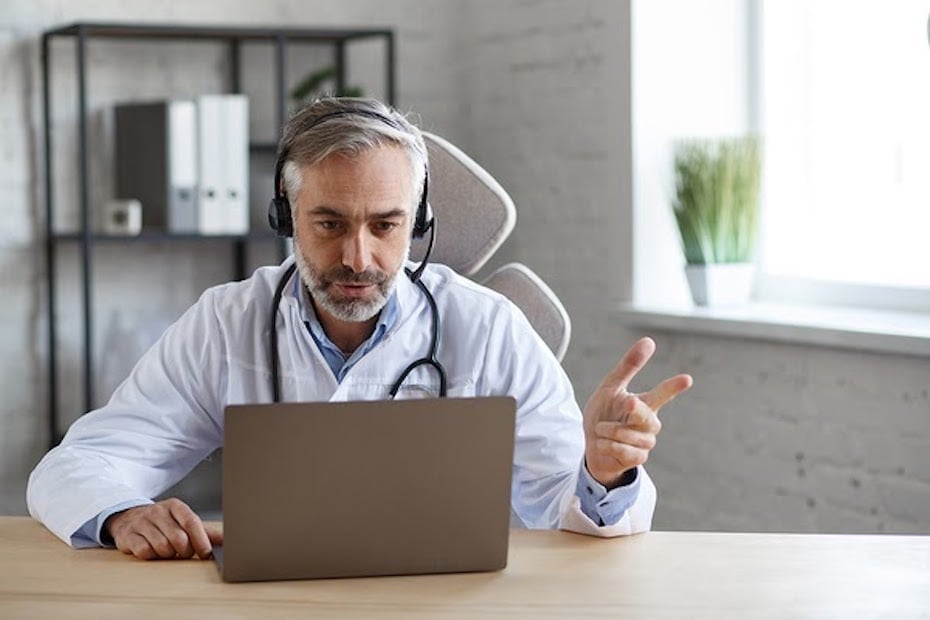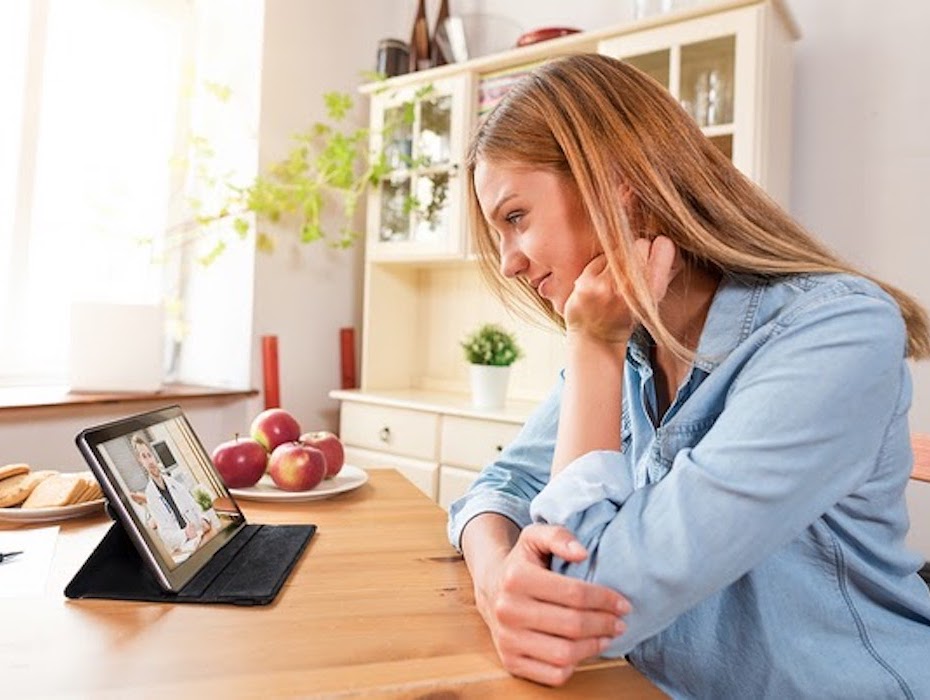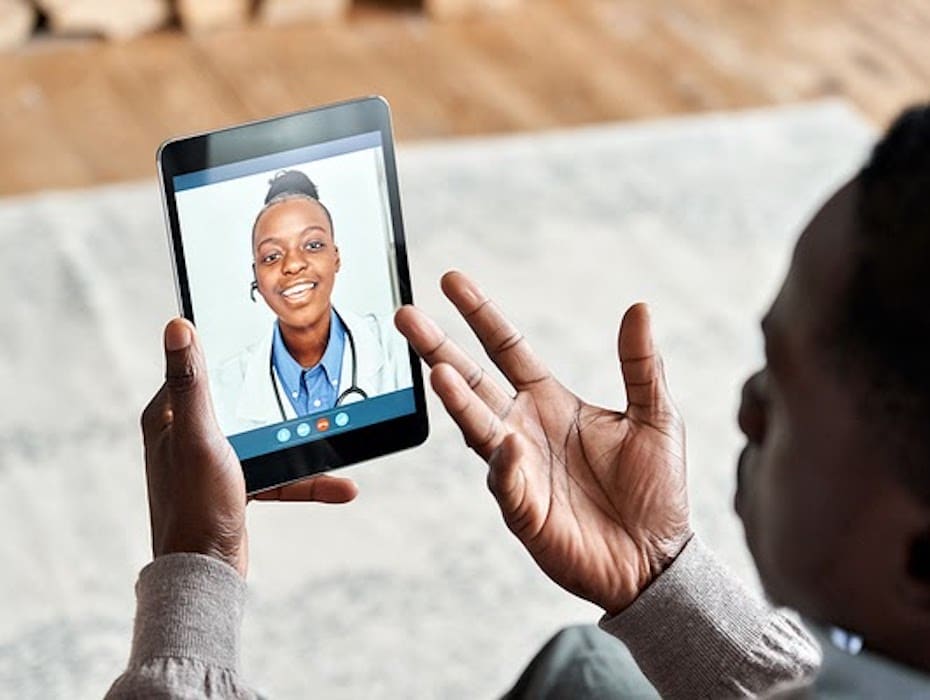Today, it’s no longer enough just to have a telehealth solution. It now must be mobile-enabled, meaning that you can deliver telehealth services anywhere, anytime, on any device.
In this post, we’ll explore the top reasons why a connected telehealth solution is critical today. (RingCentral’s connected telehealth solution is now free to healthcare providers.)
1. Healthcare providers can work from home
In the event of a public healthcare crisis, some healthcare providers may need to self-isolate as they wait for test results to confirm they’re healthy. Additionally, some providers might be immunocompromised, and they may need to stay at home for their own safety.
That shouldn’t mean that they can’t work, though. Mobile-enabled telehealth solutions allow them to continue seeing patients virtually. Patients experience continuity of care, while healthcare providers remain productive.
2. Healthcare providers want a better work-life balance
Even before the public healthcare crisis in 2020, healthcare providers were leaning toward delivering telehealth through mobile devices. Between 2016 and 2019, telehealth visits doubled, going from 14% to 28%.
The benefits are clear to healthcare providers. They can cut down on their commute time by working from home. Moreover, they can see more patients.
3. Connected telehealth facilitates care coordination
Just as it takes a village to raise a child, it also takes a team of healthcare professionals to ensure positive patient outcomes. Even if a patient doesn’t have complex needs, something as seemingly straightforward as recovery from surgery requires healthcare professionals to work together so that the patient gets better.
Telehealth technology allows members of a care team to hold video conferences or chat from wherever they are. They can easily share information about a patient with one another so they can avoid prescribing the wrong medication or preventing other negative outcomes.
4. Forward triage in the emergency department
Triage in the emergency department means that a medical professional assesses the severity of a patient’s condition. The public healthcare crisis of 2020 highlighted the importance of a concept known as “forward triage”—in which the seriousness of a patient’s symptoms can be classified before he or she even sets foot in the hospital.
In this case, connected telehealth isn’t just about how the healthcare provider uses mobile-enabled telehealth solutions; it’s about the patient being able to use mobile devices to share information with his or her healthcare provider. With forward triage, a patient could use the webcam on his or her tablet or smartphone to show a healthcare professional his or her symptoms. The healthcare professional would also be able to listen and hear how severe a patient’s symptoms are.

5. Reducing the threat of contagion
Here’s another way in which connected telehealth technology can be used within the hospital. Suppose a patient presents with a highly contagious disease. The patient needs care, yet the hospital staff doesn’t want to put themselves or other patients at risk. This patient needs to be isolated.
With mobile-enabled telehealth solutions, the patient could be quarantined with a tablet. A doctor with a tablet could perform a virtual examination, which prevents the spread of the contagion and ensures the patient receives the necessary treatment.
6. Load balancing
Sometimes, a public healthcare crisis can affect some regions much more than others. Healthcare providers in less-affected regions can step in to reduce the burden on their colleagues in harder-hit areas.
Why is this a use case that makes sense for mobile-enabled telehealth solutions? A doctor in South Carolina might be called in to treat a patient in California. The three-hour time difference means that the South Carolina doctor may already be at home when the California patient is available. Being able to deliver telehealth through a phone or tablet means the patient still receives care even when the doctor isn’t at the office.
7. Specialists can expand their patient roster
With telehealth technology, geographical boundaries don’t mean as much as they once did. A specialist who saw patients who lived in and around a particular city can now expand his or her reach.
The mobile-enabled telehealth technology works both ways in this case. Patients can use their mobile devices for virtual appointments with a specialist, and specialists can see patients from their office or the comfort of their home.
8. Rural patients get better access to healthcare
It’s an unfortunate truth that rural patients have less access to healthcare. If you look at the number of physicians per 10,000 people living in the U.S., there are about 13 doctors for rural patients; for urban patients, there are approximately 31.
Connected telehealth technology can change those statistics. Rural patients can improve their access to a physician through mobile devices, so they no longer have to sacrifice healthcare due to constraints such as distance or budget.
9. High-risk patients can see doctors virtually
Patients with compromised immune systems don’t want to sit in waiting rooms, surrounded by other sick patients. They want to access their healthcare providers without putting their own health on the line.
Mobile-enabled telehealth solutions allow high-risk patients to stay home and attend virtual appointments. They reduce their risk of contracting another illness that could make their own condition worse and still get the healthcare they need.
10. Connected telehealth makes follow-up care easier
Follow-up care can be a source of irritation for patients. Perhaps they don’t want to take the time off work, or the doctor’s office is too far. Moreover, they don’t see the need for it—they’re feeling better, so they can go on with their lives.
However, when patients avoid follow-up care, they’re more likely to be admitted or readmitted to a hospital. Connected telehealth makes follow-up care easier for patients; they can attend visits in the comfort of their own home, which increases convenience and decreases the costs associated with doctors’ visits.
RingCentral: connected telehealth for a better healthcare experience
RingCentral’s connected telehealth solution makes telehealth easier for patients and doctors alike. See how cloud communications can transform your healthcare organization. Request a demo.
Originally published Dec 29, 2020, updated Jul 25, 2024





